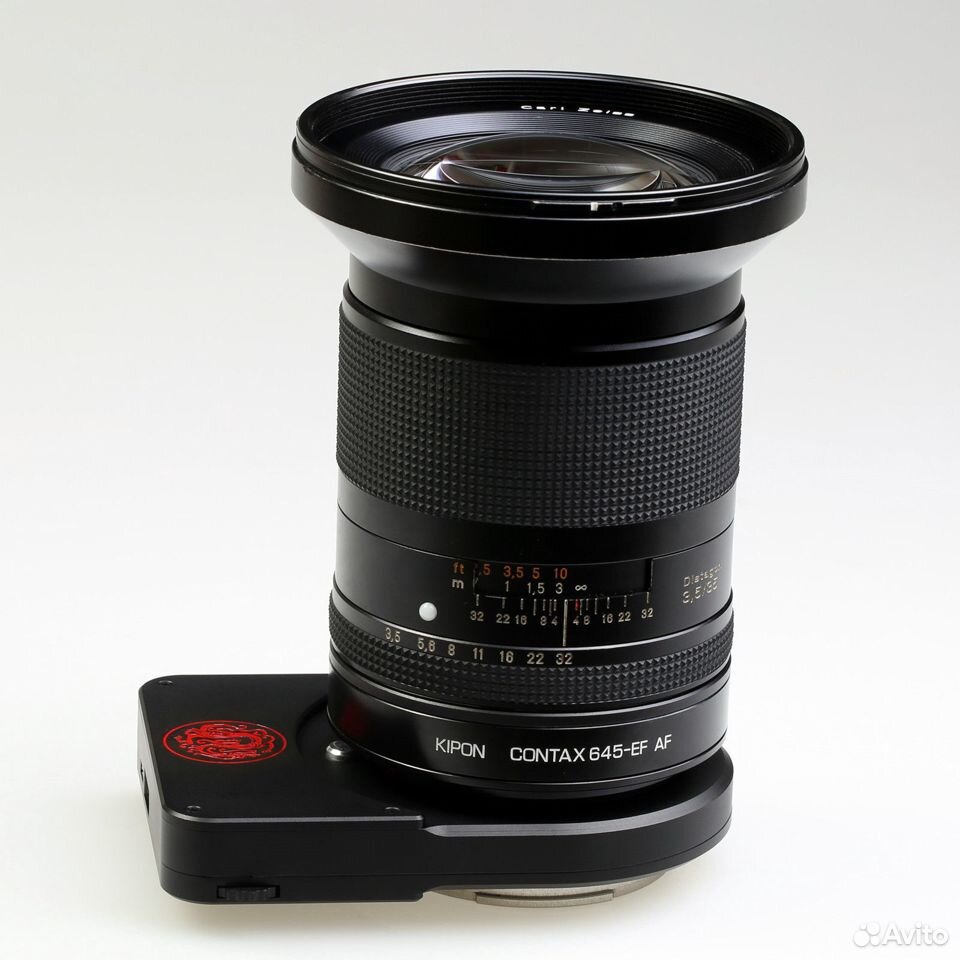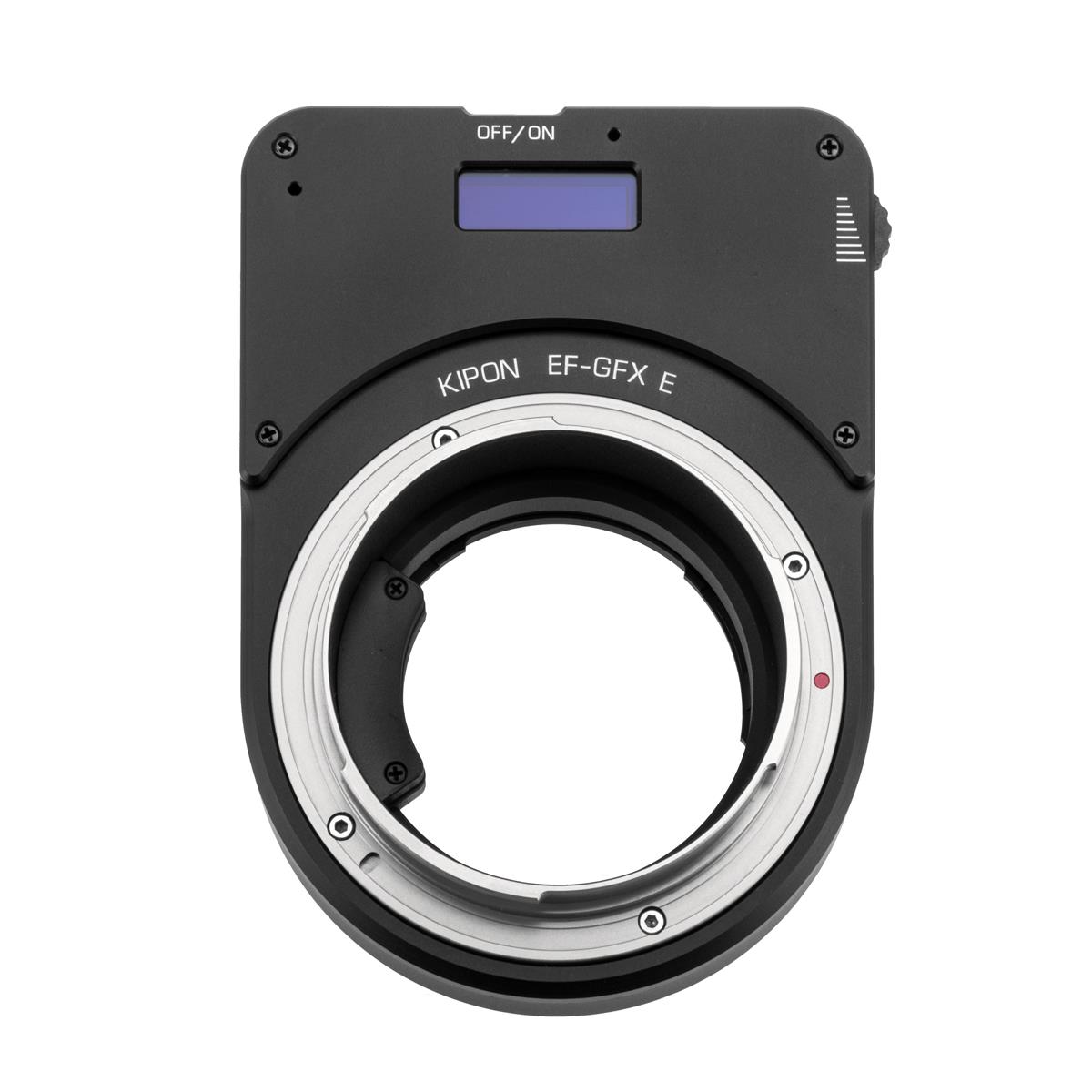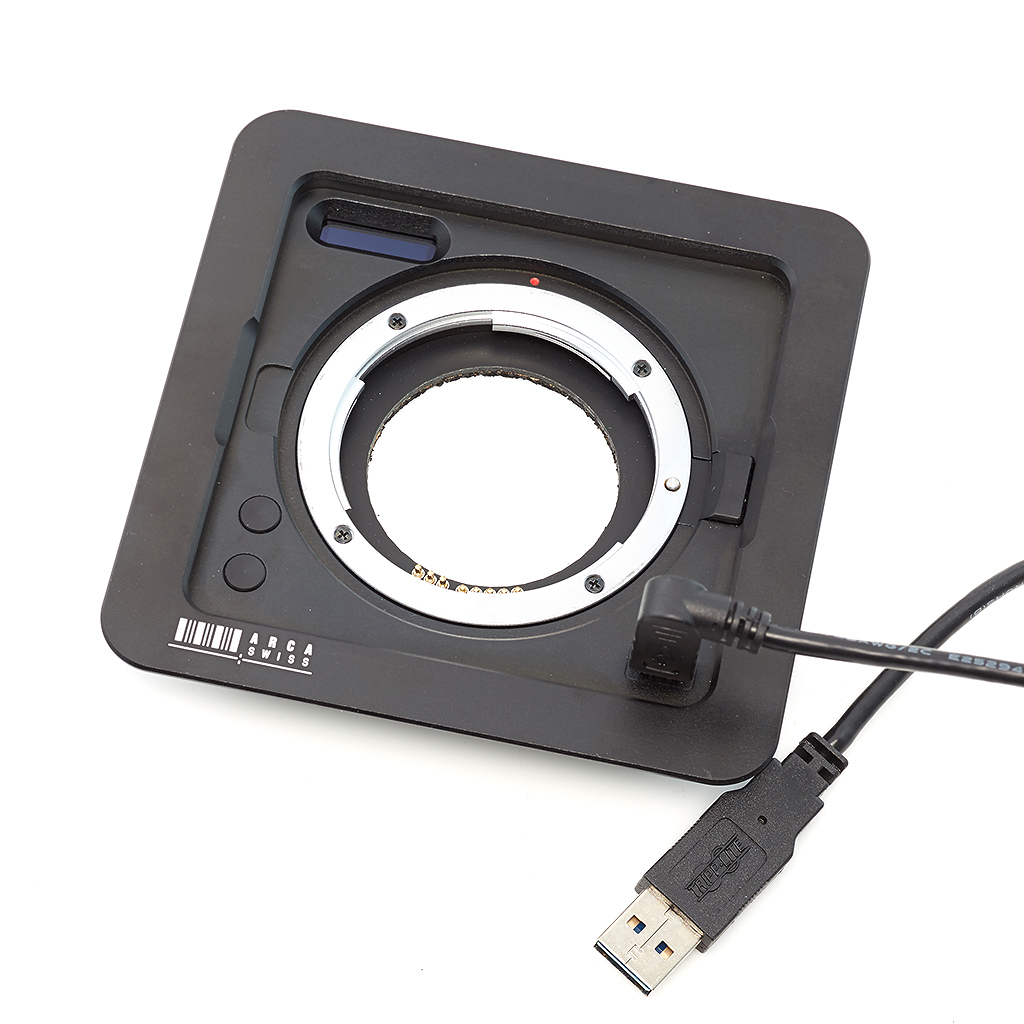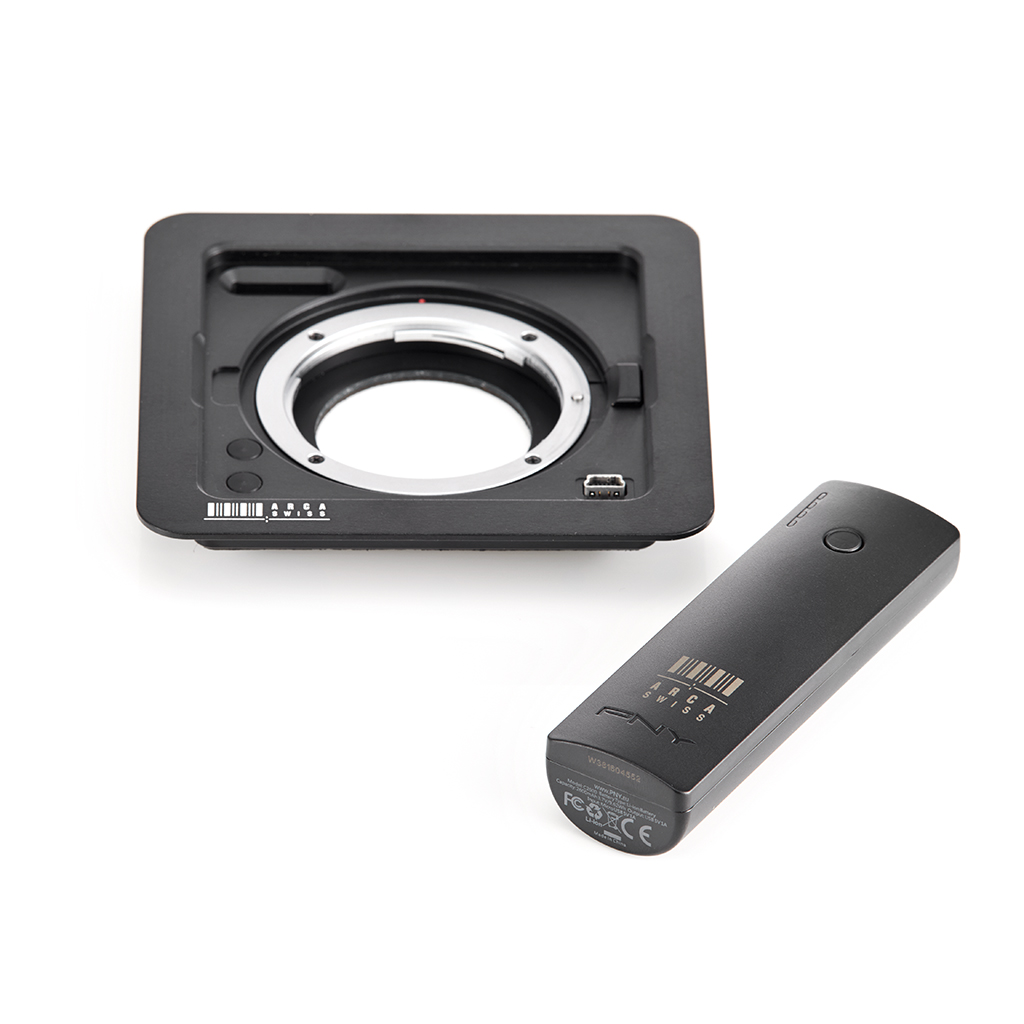Although I don't see any available on eBay at the moment, earlier this year, various eBay sellers were offering package deals on a stacked Kipon G to Canon EF / Canon EF to Contax 645 adapter combo:
As this photo from another source shows, there are no electrical contacts on the rear of the adapter, which implies it will work as a standalone adapter and does not need to be powered from the camera body:
Although I have no experience with any of these adapters, I do own Cambo's smart EF adapter for its Actus model -- which Kipon's version appears to have cloned -- and I can confirm firsthand that it is self-powered and
will work without being attached to a camera body.
The tricky part about using these adapters for a different application is their thickness. The Canon EF side is designed around a 44 mm FFD and the Fuji GFX side is designed around a 26.7 mm FFD. (As another data point, the C645 lenses have an FFD of 64.0 mm.)
This means an unmodified Fuji to Canon EF adapter must be 17.3 mm thick (i.e., 44 mm minus 26.7 mm) and there is no room available to add a shift movement, as you noted. However, if the male GFX bayonet is removed from the adapter, this will free some amount of space into which a shift adapter can be grafted and if the entire rear panel of the adapter can be replaced and its controls and LCD mounted remotely (as I can confirm is possible with the Cambo design), this will free even more space that can be used for a shift movement.
As I noted, though, this approach is not without its complications, as the lack of space available for a shift movement means the camera onto which the adapter will be mounted must be designed around the adapter and not the other way around. That said, it clearly
is possible, but it will almost certainly require that many of the camera's parts will have to be machined to spec instead of adapted from other cameras or bought off the shelf.
For some, this won't be a big deal, but for others, it will be a deal-killer. And unless one does the machining themselves, it will almost certainly be expensive, too.
Another possible option is to adapt the Arca Swiss smart lens panel for Canon EF lenses instead of the Kipon version:
To my mind, adapting this to work with another camera will likely be quite a bit easier than adapting the Cambo or Kipon versions, as it comes already mounted to a potentially suitable lens board and appears from this photo to be noticeably thinner, too:
One possible caveat: I don't know if the firmware of the Arca smart lens panel will play happily with the firmware of other brand Canon EF to C645 smart adapters, but I do know from past experience trying to stack other smart adapters that this can sometimes be an issue (and an insurmountable issue for someone whose skills are primarily mechanical, such as yours truly.)
Also, as with the other two smart adapters mentioned above, this adapter is not inexpensive. Which is
not to suggest that it's overpriced or doesn't offer good value, only that from my perspective, at least, it's not inexpensive.
Speaking of which, Alpa has in the past made similar smart lens panels for Contax 645 lenses -- including one having rise / fall / shift movements, believe it or not! -- but they were very expensive in non-Alpa terms and I have been told they didn't sell well, so have been effectively discontinued, if not formally discontinued. (I'm sure someone will correct me if I'm wrong about this, but IIRC, the price was around $4,000 or some other amount so far beyond what my budget will allow, that I've never given it much thought.)
Another potential issue is the range of movement possible with all of these adapters (except maybe the Alpa version, to which C645 lenses can be mounted directly) before mechanical vignetting occurs, because the throat dimension of the EF lens mount is fairly narrow. Obviously, in this respect, the thinner the adapter, the better, so the Arca version may be able to add another checkmark in its favor.
As is often the case, analyzing photos can only take one so far, hence it will be necessary to actually hold these adapter in one's hands to accurately assess their suitability for a project of the type you appear to be undertaking and, well, good luck with that!
Personally, as much as I love my Contax 645 lenses, I decided the cost of adding an electronic aperture control feature to my FrankenKameras was too much for the modest budget I have available for photography these days, so I've resigned myself (for the time being, anyway!) to using them in preset mode, which costs me nothing. Ditto for my efforts at doing the same for Contax N lenses -- the 17-35/f2.8 zoom is practically a perfect fit for my needs! -- as I destroyed the circuit boards I harvested from
two auto-extension tubes by trying to solder longer wires to them before I decided enough was enough and I wasn't willing to possibly throw away another couple of hundred dollars trying a third time to do so. <sigh>
I have zero experience using this camera / lens combo. I have, however, used the C645 35/f3.5 with my A7R via a Cambo WDS-based FrankenKamera quite extensively and posted my observations in this thread:
https://www.getdpi.com/forum/medium...contax-35-pc-distagon-gfx-50r.html#post805013
And good luck with your project, however you decide to proceed with it!







